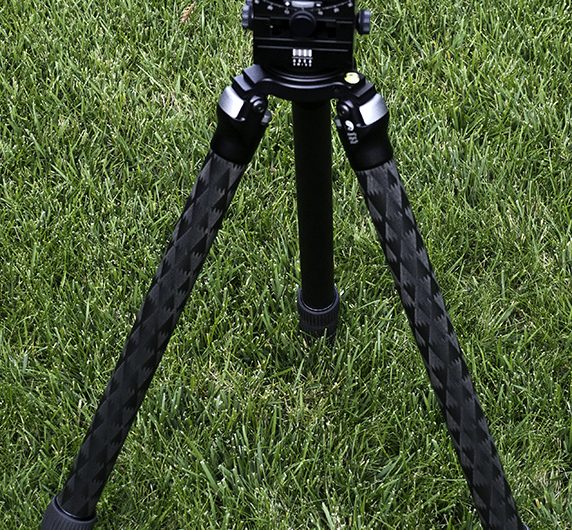

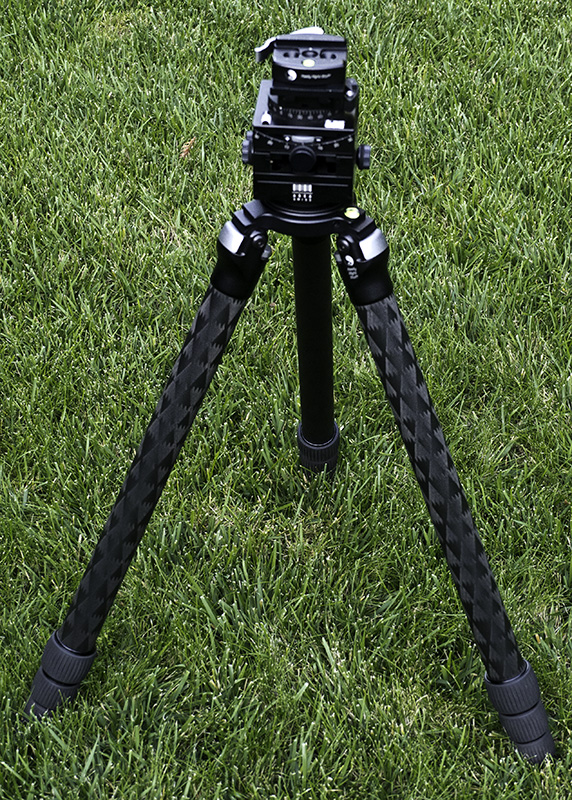
Really Right Stuff TVC-34L tripod with ARCA SWISS C-Cube head
Buying Tires
Buying a tripod reminds me of buying tires for a car. I ask myself: When was the last time that someone looked at my car and said: “That is a a great set of tires”?
The answer is: Probably never.
So, while few things are less exciting than buying tires for a car, a little bit of additional thought reminds us that our very lives depend on four small patches where the rubber meets the road. Furthermore, the handling of the car as well as the quality of the ride, the road noise and several other crucial items relate directly to the tires.
Bottom line: While tires are not glamorous at all, they are critical to an automobile’s safety and handling, not to mention several other things.
Tripods
Just like tires are critical to automobiles, tripods are critical to photography. And just like tires, they are not particularly glamorous, but the sharpness of your final images and the stability and safety of your equipment are directly related to your tripod.
Besides sharpness and safety, tripods (in my view) have other ways to greatly influence the quality of your work. Why? Because some tripods can get your body and your hands quite tired and achy, particularly near the end of a long day in the field at sunset, when some of the best images happen. Also like any other piece of equipment, if it is flawless and smooth it will help you get better images. If it is clunky and difficult to use, the frustration is likely to come through in your photographs; not a good thing. You could even miss a priceless shot by missing the light while futzing with a clunky tripod.
In other words, tripods that have flaws simply suck.
To summarize, a good tripod not only delivers sharper images and keeps your equipment safer. It also keeps your mind, hands and body in a better state to produce higher quality work.
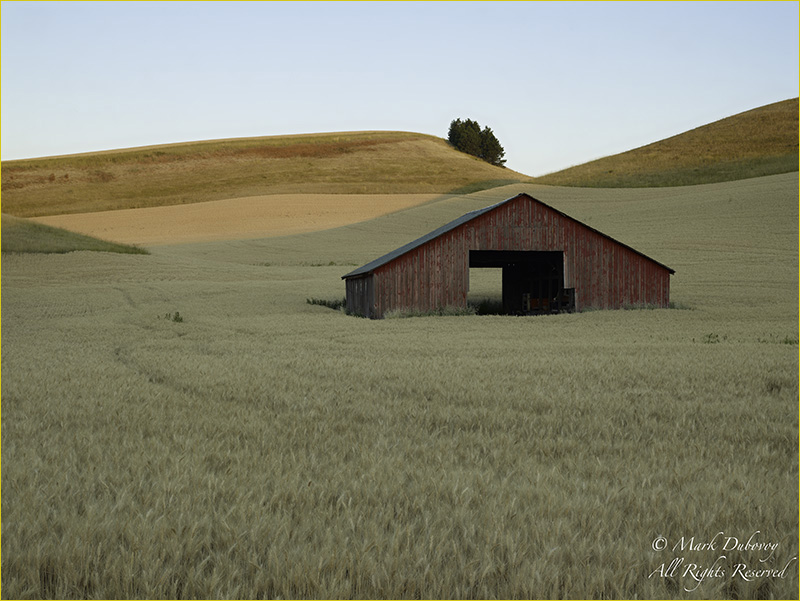
The Barn
This is a focus composite of 5 images using an ALPA SWA
wi th Rodenstock Digaron 100 mm lens
and the Really Right Stuff TVC-34L tripod wi th an ARCA Swiss C-Cube head
Underestimation
Many people underestimate the size of the tripod they need. They fall into the trap of thinking that something really light and really small will always work. Unfortunately, this is not the case.
A typical example happened during a workshop I taught in Iceland last year. A gentleman from Russia was not satisfied with the sharpness of his images from a Medium Format camera with a top of the line digital back. He blamed it on the lenses, the camera and the back. However, one quick look told me that his tripod was too small and too flimsy for the type of camera he was using. Despite his conviction that his tripod was perfectly fine and more than adequate, I finally convinced him to try my tripod. The result? As you might have guessed by now, the result was a dramatic increase in sharpness. He was shocked.
I encountered a somewhat similar situation on a more recent workshop, where on our first field outing I saw two participants using tripods that were clearly too small and two flimsy. One of them agreed to run a quick test and shoot the same image with the camera on his tripod first and on my tripod second. Needless to say, the quality difference in the files was quite significant.
The other person, however, claimed that he had been shooting Medium Format with his tripod for years, and he would not even remotely consider doing a comparison test. He was so convinced that all his equipment was perfect that he almost took offense at my suggestion that his tripod might be causing a problem. All I know is that the second person in this anecdote is not getting near the quality that MF can deliver, due to a sub-standard tripod. What a shame…
Test your tripod for vibration!
There is an extremely easy way to test a tripod for vibration. Any laser device such as a laser rangefinder or a laser pointer is all you need. The only requirement is that you be able to leave the beam on without touching the device. Here is what you do:
Set up your camera on the tripod as you usually do. Place or tape the laser device to the top of your camera and turn the beam on. Point the camera at a wall or other similar object that is at least about 7 meters away from the camera. Make sure you can clearly see the laser spot.
Now, make a series of exposures at all speeds from 1/60th of a second down to 1/2 second. Observe the spot on the wallDURING each exposure. If the spot moves around showing vibration during any of these exposures, your tripod/head combination is probably inadequate for that particular camera.
If you are using an SLR in mirror up mode, and you detect vibration on the laser spot, chances are what you are seeing is focal plane shutter vibration, which tends to be much higher than what most people imagine (leaf shutters produce much less vibration).
The perfect tripod
The perfect tripod would weigh zero when you carry it and would have infinite mass once it is set up. It would also open and close itself automatically on command, and automatically level the head and set it to its neutral position. It would pick up the camera from your bag, mount the right lens on it, mount the camera on the head and aim it exactly where your brain is thinking the image is. You get the picture (pun intended).
Unfortunately, such a device does not exist, so we are left wi th a number of trade-offs.
I will make a long story short: Of all the potential trade-offs between weight, rigidity, lack of vibration, height, folded size and so on, Carbon Fiber tripods offer the best set of trade-offs. The only negative is that they are more expensive than other tripods. Expect to pay several hundred dollars for a basic model all the way to about a thousand US dollars for a top of the line Carbon Fiber tripod. The two tripods mentioned in this article cost about a thousand US dollars each.
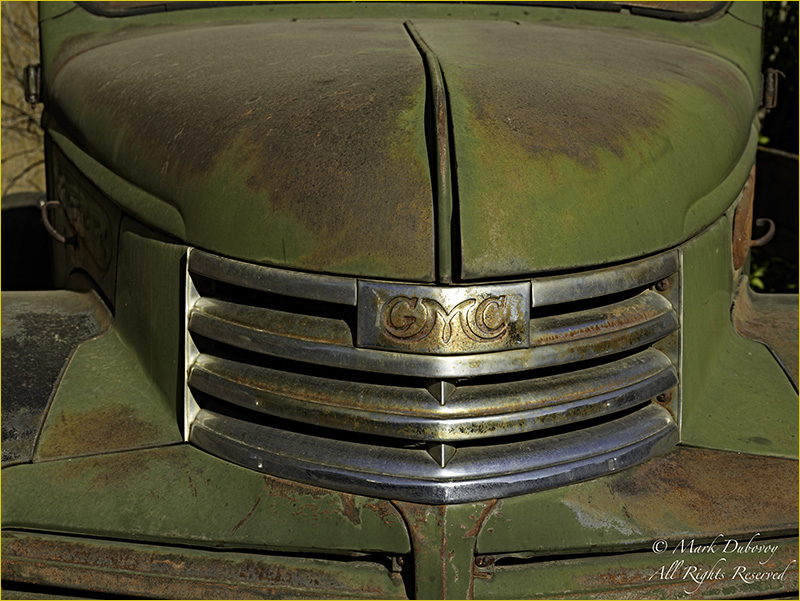
“GMC”
ALPA SWA
wi th Rodenstock 100 mm Digaron lens.
Really Right Stuff TVC-34L tripod wi th an ARCA Swiss C-Cube head
My personal criteria
My personal criteria for a tripod are based on many years of field experience, mostly wi th large format, Medium Format and pro level DSLR’s . Your style of shooting and your equipment may be very different from mine, but I believe that the basic principles still apply. So, without further ado, here is my list:
1. It must be extremely solid and stable.
2. It should have no center column.
Center columns invariably compromise stability and vibration resistance. They are truly awful when extended, and they are still detrimental even when there is no extension. I used to think that tripods with a center column were fine as long as the center column was not extended. I held this belief until my close friend and excellent photographer Bill Atkinson suggested otherwise. I have a lot of respect for Bill, so I ran the test and found that he was right as usual: The same tripod with and without a center column showed very different results.
Conclusion: Unless you have an incredibly unique circumstance such that you absolutely have to have a center column (I cannot think of one) they are to be avoided at all costs.
3. Legs should extend long enough to put the camera significantly higher than my head.
The reason for this is that I never want to find myself on a hill or in deep snow or on a rock formation wi th legs that are not long enough to safely position the camera perfectly level where I want it. Also, I occasionally find situations where shooting standing on a step stool makes for a much better image. Having a tall tripod (within reason) is a necessity for me.
4. The tripod must fold small enough for convenient travel and field use.
Something around 25-27 inches (60-65 centimeters) is ideal. Slightly larger is probably still OK. However, if a tripod is much larger than that when folded, it becomes a real hassle for travel. It will no longer fit in a suitcase or a reasonably sized duffel bag, so chances are it has to go in its own separate case when flying. It also starts to become unwieldy inside vehicles and when you carry it in the field.
5. The locks must be smooth and easy to operate.
Nothing is worse than locks that do not lock a leg positively, or locks that are hard to operate and get your hands and/or arms tired and achy when you work all day.
6. The legs must be positionable at different angles.
This is an obvious necessity when working in uneven terrain.
7. It must be light enough to carry for a whole day, yet solid enough to support a Medium Format SLR without vibration induced blur in the images.
8. It must be extremely sturdy and well made in order to survive the rigors of field use.
9. The bottom of the legs should work under all kinds of surfaces and conditions, from carpets or fine floors indoors to mud, salt water, sand or rocks outdoors.
10. It must be easy to clean and maintain.
My Current Tripod
Being an early adopter, and given that Gitzo was the first company to introduce Carbon Fiber tripods, I purchased a Gitzo Carbon Fiber tripod.
Gitzo makes truly excellent products, but alas, there were problems. The locks were not particularly to my liking, the rotation of the legs when unlocked was a very bad thing, while I was used to infinitely variable and lockable leg angles in my old Reis tripods, the Gitzos offered only 2 or 3 positions, I did not like the angle stops and so on…
As time went by, Gitzo addressed and solved many of these problems, but not all: The locks in the current Gitzo line are much better than before, the legs no longer rotate, but a few other nagging issues remain. I am still not a fan of their leg locks, I still do not like their angle stops, I still think their feet can be significantly improved,etc.
A major nagging issue is that I do not like their Apex lock. One cannot visually tell whether it is loose and the center platform is about to come off. I have found my center platform to be loose a number of times, and I have actually seen cameras fall off of Gitzo tripods while people carry their cameras wi th the tripods over their shoulders.
Warning to Gitzo users: Tighten the Apex screw wi th the provided tool often, and never carry your camera wi th the tripod over your shoulder.
In spite of these shortcomings, I still thought that the Gitzo tripods were the best products on the market at the time, so I eventually settled on a GT 5540 LS tripod. It has been my main tripod for a number of years.
A source of frustration for me was that I found the 3-Series Gitzos to be about the right weight for field use, but marginal in terms of robustness and vibration resistance for Medium Format or Pro DSLR use. This forced me to settle on a 5-Series tripod, which unfortunately is very thick and quite heavy.
Enter The Really Right Stuff
A while back Joe Johnson, owner ofThe Really Right Stuff, set out to try to build a better tripod. Although I am quite familiar wi th the company, I never looked into their tripods, because at first blush they looked a lot like the Gitzos .
While traveling in Africa recently I found two photographers that were using Really Right Stuff tripods and I was quite impressed. So, I called the company and asked Joe if he would be kind enough to let me borrow a tripod to put it through its paces and write a review forThe Luminous Landscape.
Given my criteria for a tripod, the obvious choice was the TVC-34L, which Joe was kind enough to let me borrow. I have now used the tripod more than enough to be thoroughly familiar with it, including some travel and teaching.
First of all, in terms of leg diameter, the TVC-34L is slightly larger than a Gitzo 3 series, but significantly smaller than a Gitzo 5 series. This is exactly what I wanted in the first place. The tripod is also quite a bit lighter than my old Gitzo 5 series . Hurrah!
Amazingly, in my tests wi th 3 leg sections fully extended, the Really Right Stuff tripod is actually more stable and less vibration prone than my old Gitzo . And, this holds true even though the platform on the Really Right Stuff tripod sits significantly higher than the Gitzo when the 3 upper leg sections in each are fully extended. This is a triple hurrah: Lighter, smaller diameter legs, taller and yet more stable and less vibration prone!
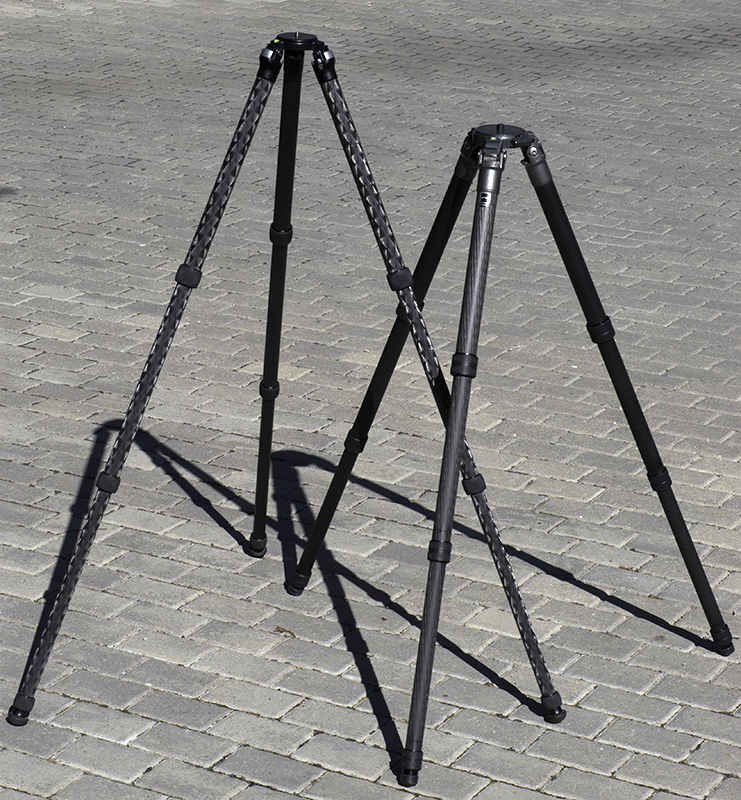
Really Right Stuff (taller tripod) versus Gitzo wi th 3 leg sections extended
Even though the Really Right Stuff tripod is taller, lighter and the leg diameter is smaller,
it is more stable and less prone to vibration!
Really Right Stuff seems to have successfully addressed pretty much all my issues wi th the Gitzo tripods:
-
- They have what they call the SUREGRIP™ APEX LOCK. The Apex locks with a set of screws. In the locked position, all set screw heads are flush or slightly below the outside surface of the apex ring. In order for the platform to be removed, all three set screws must be loosened sufficiently (they will definitely stick out and not be flush) to allow the Apex Lock Ring to clear the corresponding channel in the platform. This is a very secure locking mechanism and gives the photographer a visual safety indicator if something is loose.
- Although the angle stops are not infinitely variable as in the old Ries tripods, they are sprig loaded which (unlike any other tripod I have tried) assures that the angle stops stay fully seated into position.
- The rubber twist locks are significantly better than in any other twist-lock tripod I have tried. They are easy to grip and it takes almost no force to have a positive lock. Also, once locked they have some back and forth “free play” which makes them very easy to lock tighter if needed or to unlock. My hands feel much better versus using any other twist-lock tripod after a full day of locking and unlocking legs in the field.
- The teardrop shaped rubber feet protect the leg sidewalls from touching the ground and make positive contact with the ground at any angle. This is a much better design versus competing tripods (the feet may be interchanged with Spikes or Rock Claws, but so far I have not found a need to use something other than the standard feet).
- The fit and finish on the tripod is essentially flawless. This is a very high quality product. It is interesting to note that key parts are black anodized instead of powder coated, which is a much more durable finish.
Is there anything not to like?
As usual, the answer is yes.
1. If you look at the images above, you will immediately notice the weave pattern on the legs. In bright light, the pattern can get quite shiny. Shall we say loud? It really calls attention to the tripod, which is contrary to my usual desire to have equipment that is stealthy as opposed to screaming: “Look at me, I am fancy and expensive”. I would much prefer a more muted color and design, but I suppose that it is this very weave and the material used that gives the tripod its outstanding characteristics.
2. I continue to grieve the capability of being able to lock the legs at any angle as in the old Ries tripods. While the angle stops are excellent, one is still restricted to only a few angles. I wish someone would introduce a modern tripod without this restriction.
Conclusion
Is The Really Right Stuff TVC-34L the best tripod in the world?
I would never make such a statement and assert that it is, because that would imply first that I have tested every other tripod on the planet, which I have not. It would also imply that it is the tripod of choice for everyone and for every use, which no single piece of equipment can be.
What I can assert without hesitation, is that given my criteria for a tripod, the TVC-34L is hands down the best tripod I have ever used. It gets my highest recommendation for an extremely well thought out and beautifully built piece of equipment.
Needless to say, I will be purchasing the review sample.
Mark Dubovoy
September, 2011
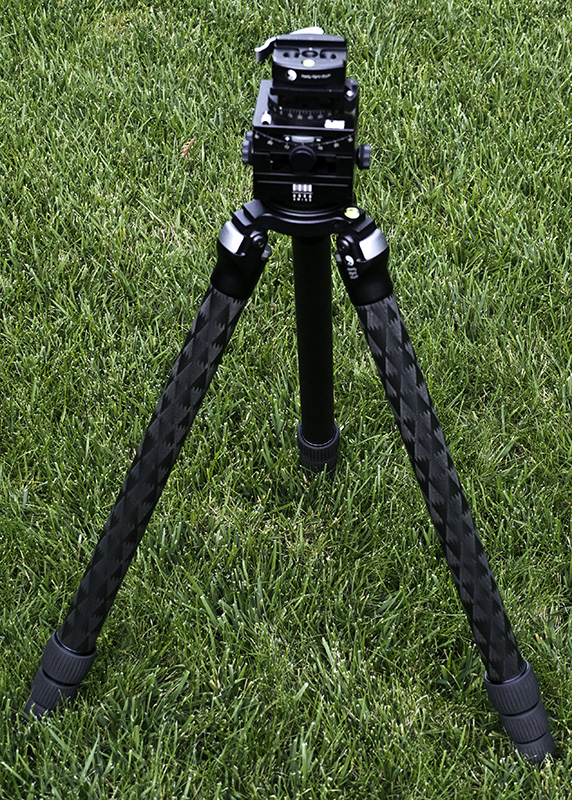
Lorem ipsum dolor sit amet, consectetur adipiscing elit, sed do eiusmod tempor incididunt ut labore et dolore magna aliqua. Ut enim ad minim veniam, quis nostrud exercitation ullamco laboris nisi ut aliquip ex ea commodo consequat. Duis aute irure dolor in reprehenderit in voluptate velit esse cillum dolore eu fugiat nulla pariatur. Excepteur sint occaecat cupidatat non proident, sunt in culpa qui officia deserunt mollit anim id est laborum.
Lorem ipsum dolor sit amet, consectetur adipiscing elit, sed do eiusmod tempor incididunt ut labore et dolore magna aliqua. Ut enim ad minim veniam, quis nostrud exercitation ullamco laboris nisi ut aliquip ex ea commodo consequat. Duis aute irure dolor in reprehenderit in voluptate velit esse cillum dolore eu fugiat nulla pariatur. Excepteur sint occaecat cupidatat non proident, sunt in culpa qui officia deserunt mollit anim id est laborum.
You May Also Enjoy...
Making Profiles with the HP Z3100
One of the most exciting features of the new HP Z3100 series printers is the built-in capability to make profiles. This is made possible by
